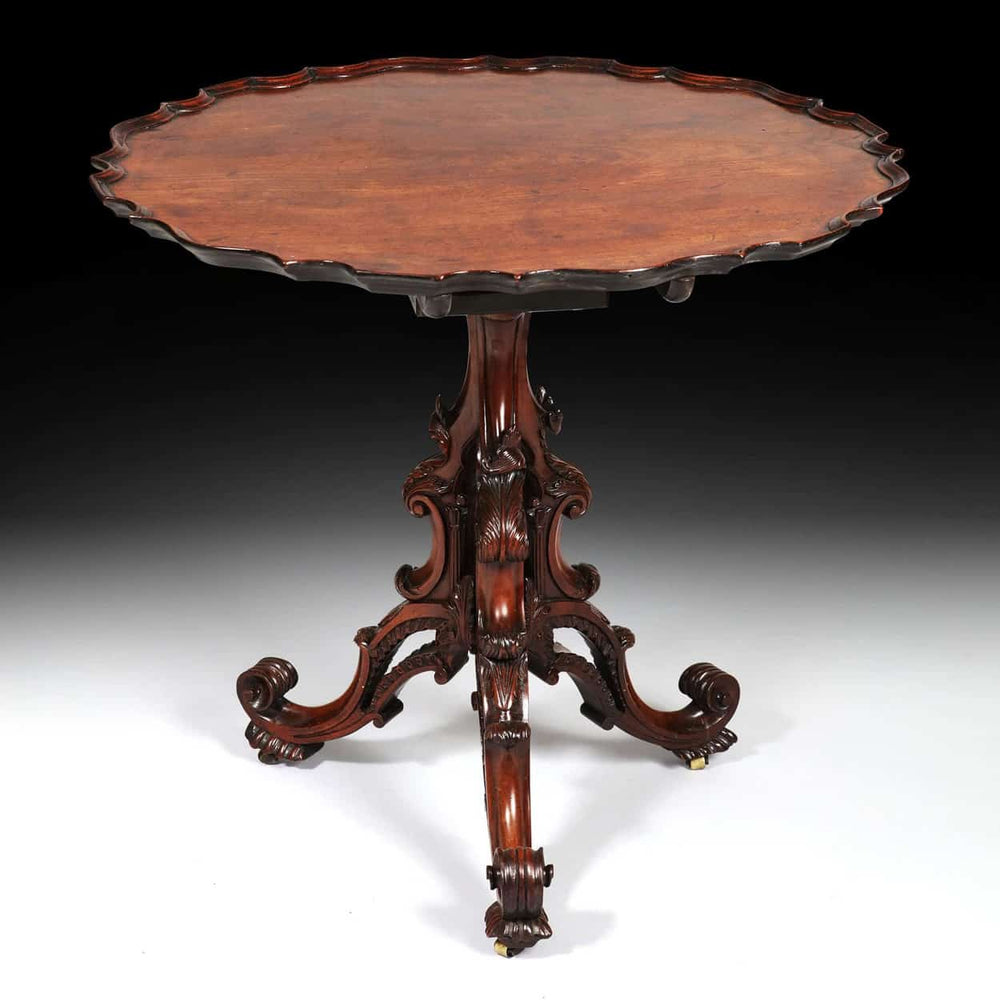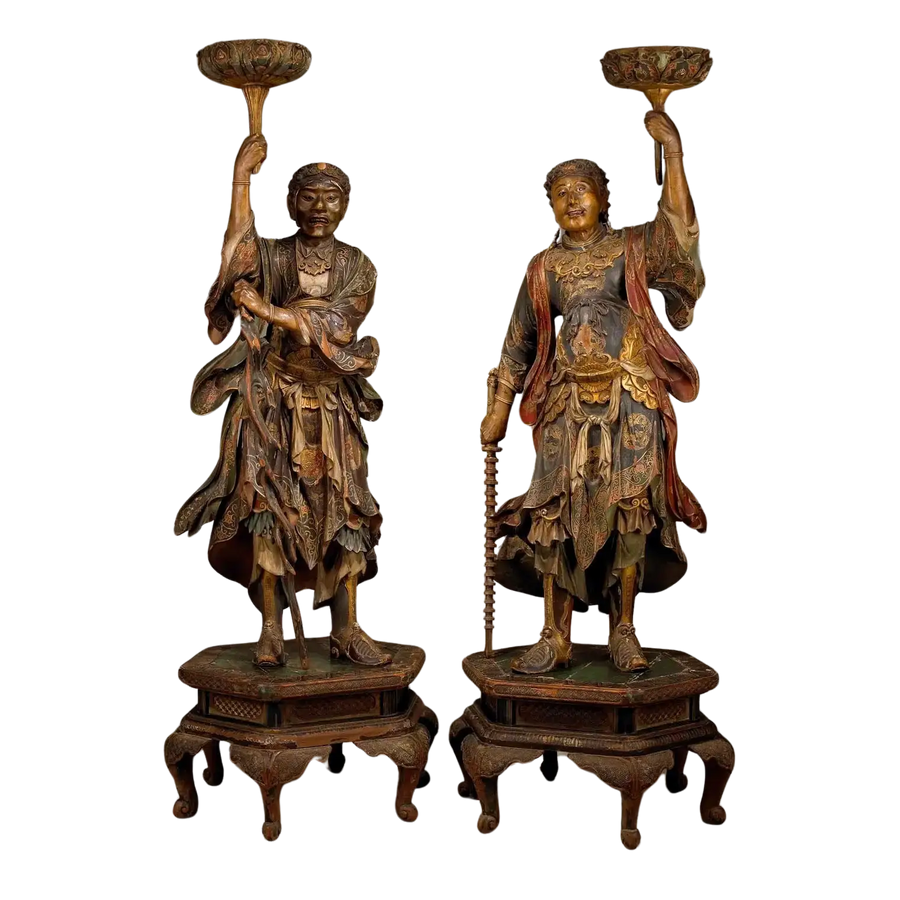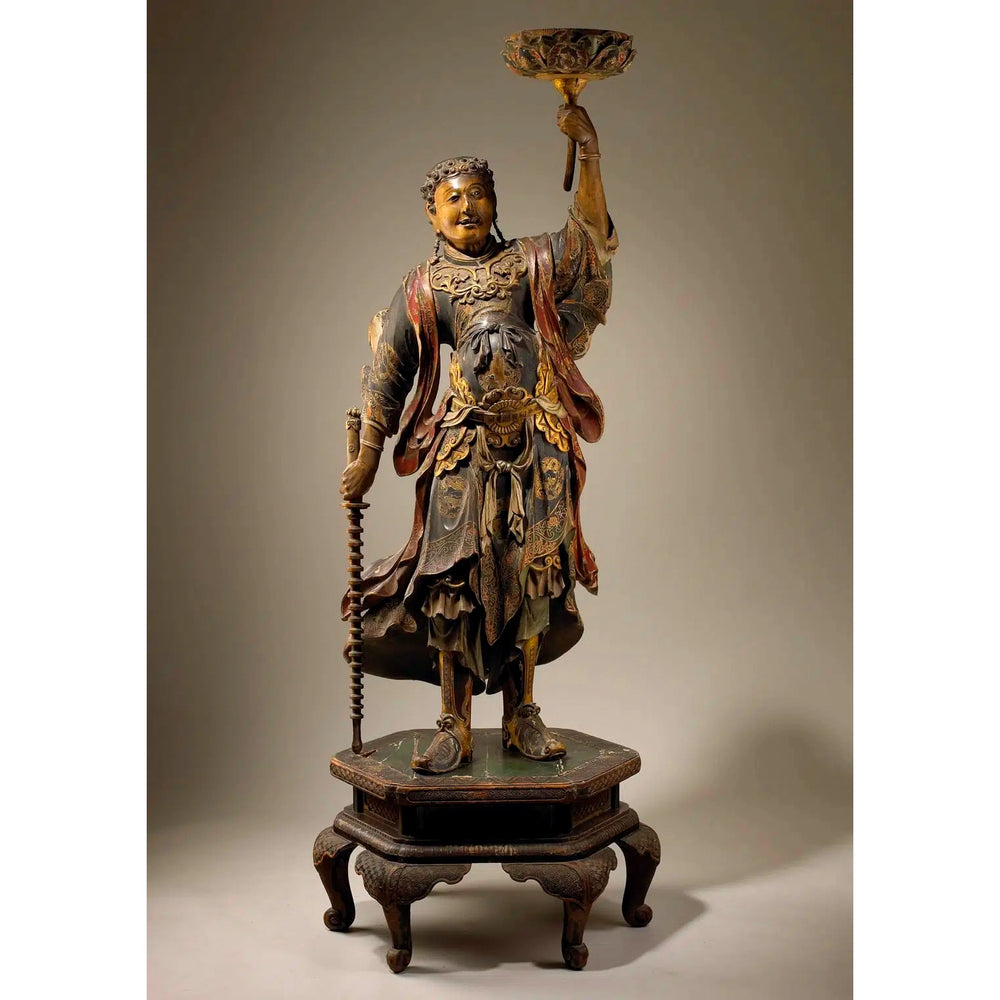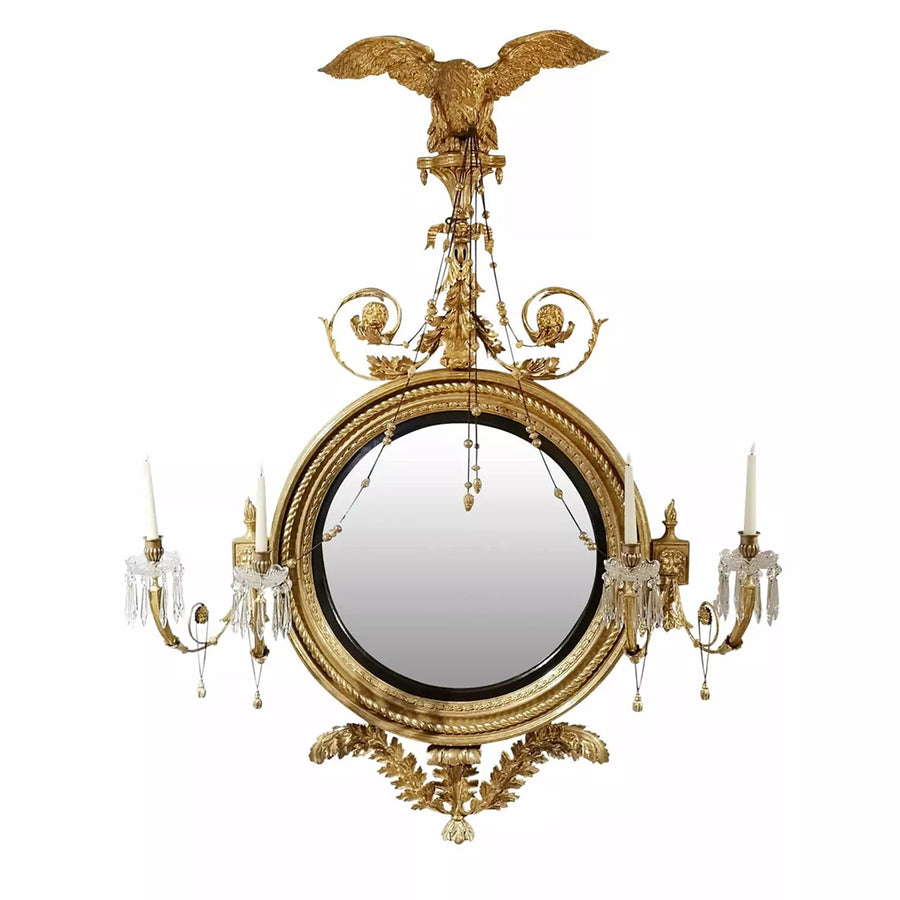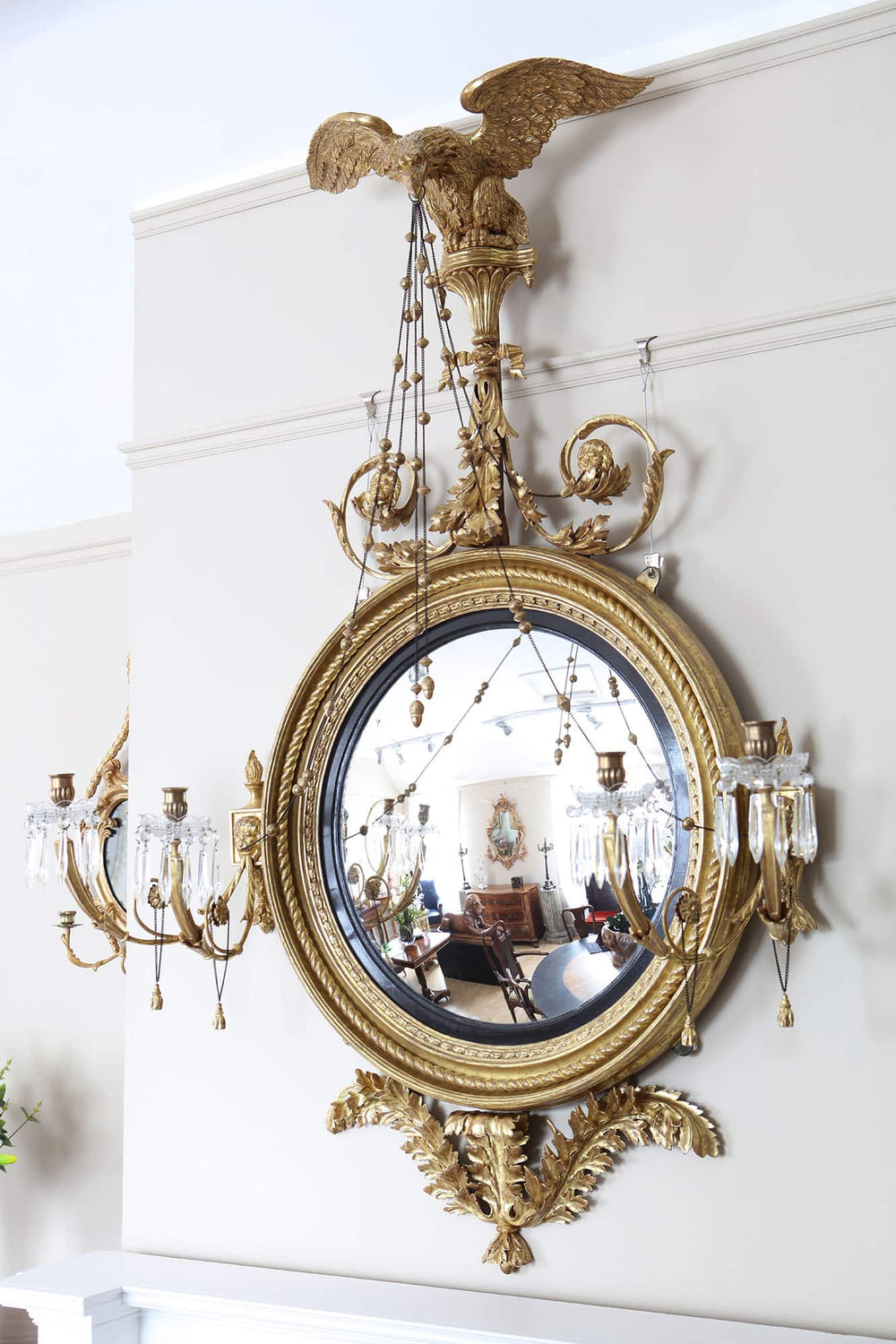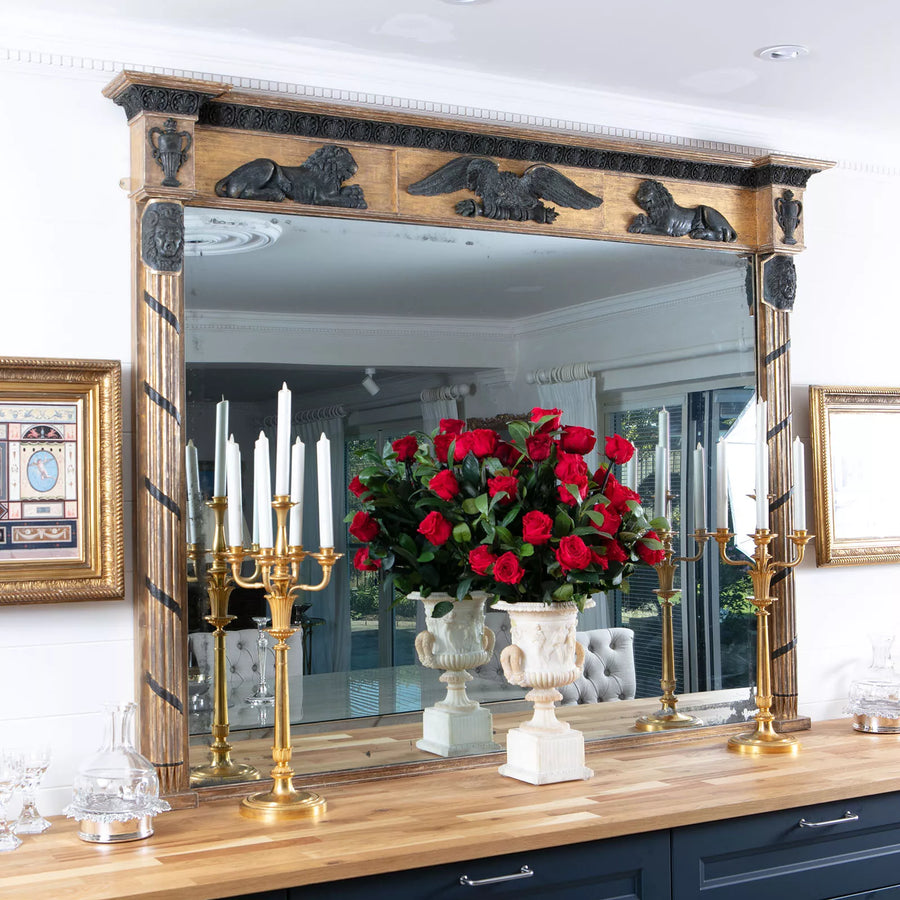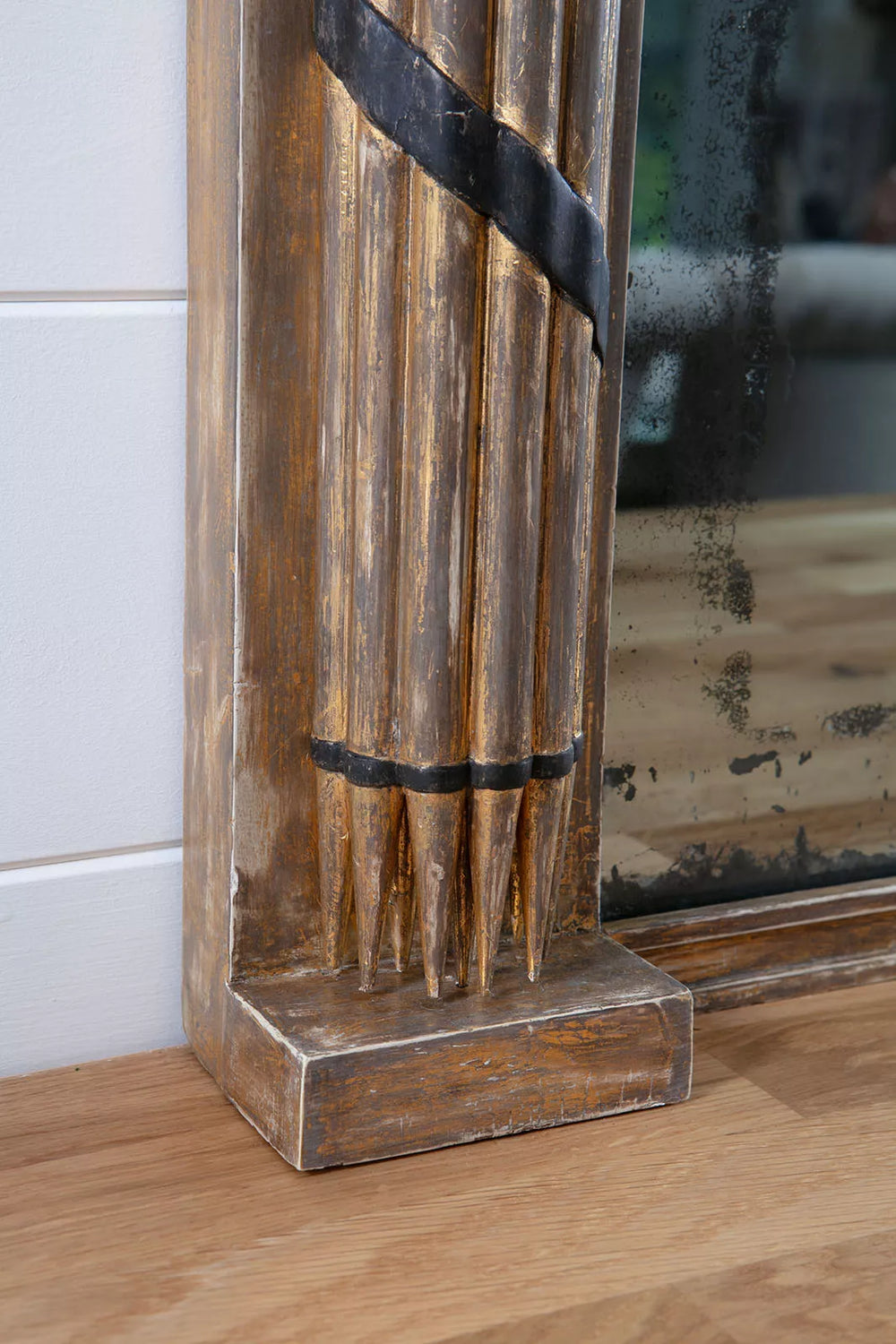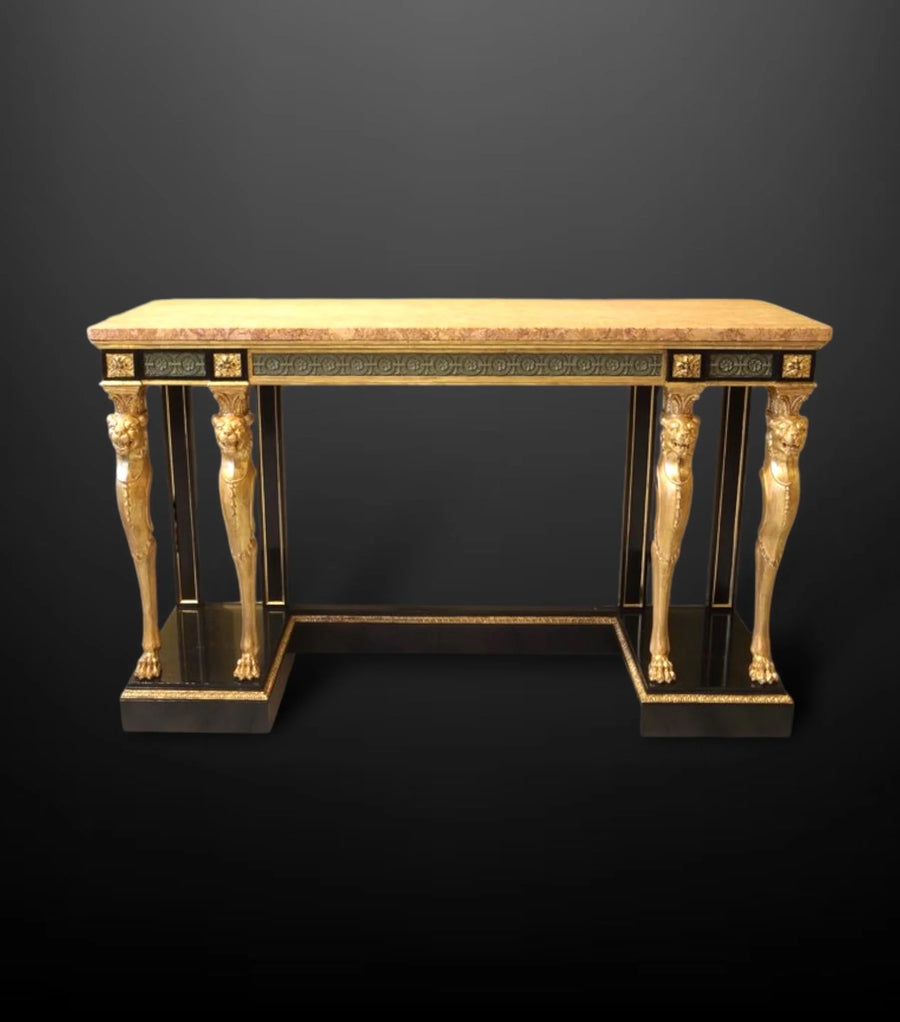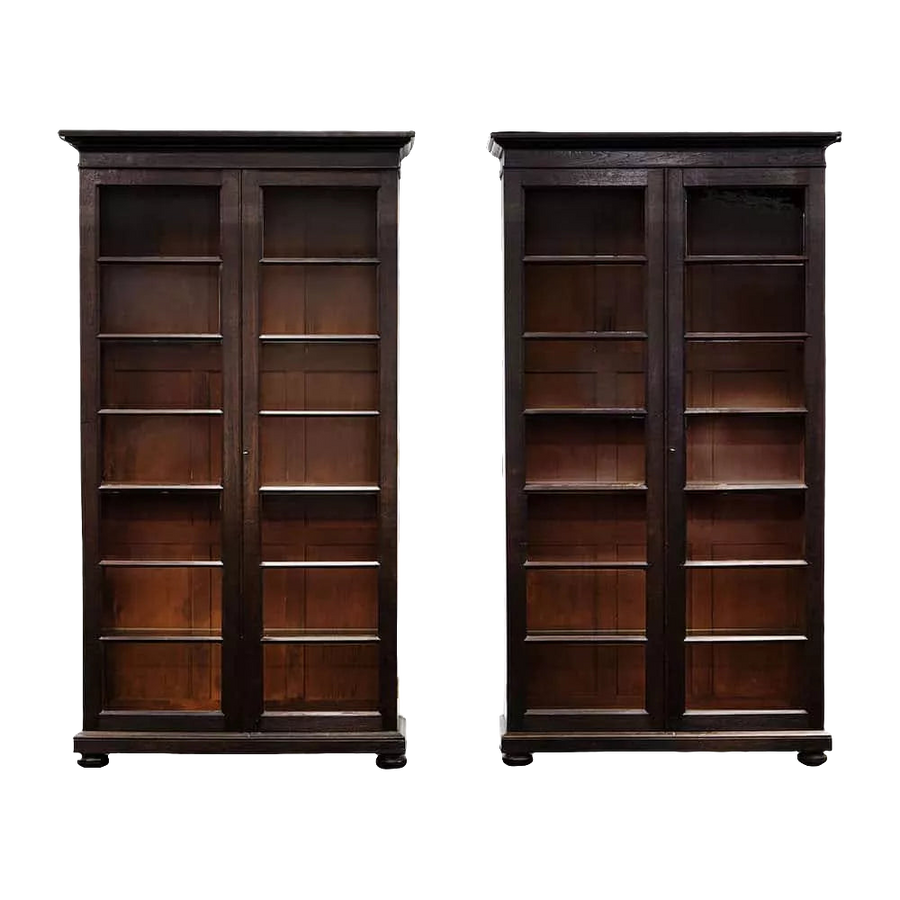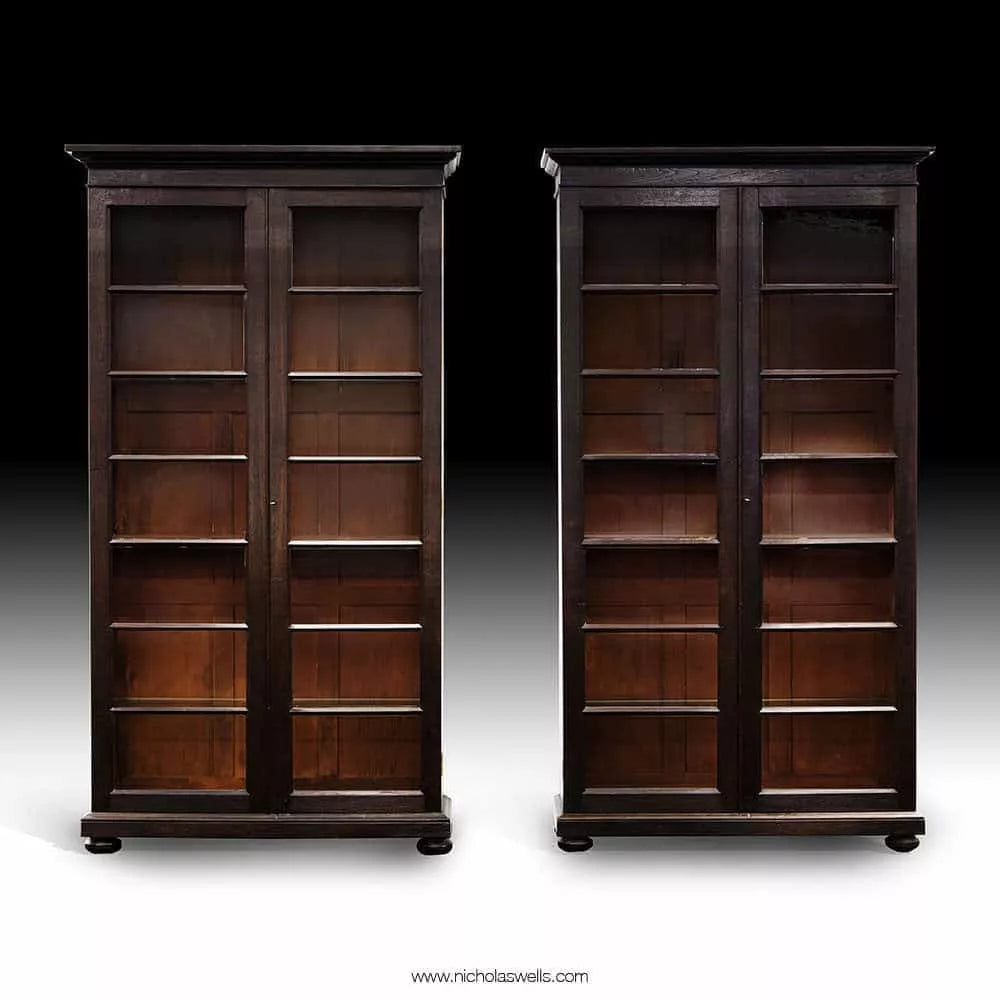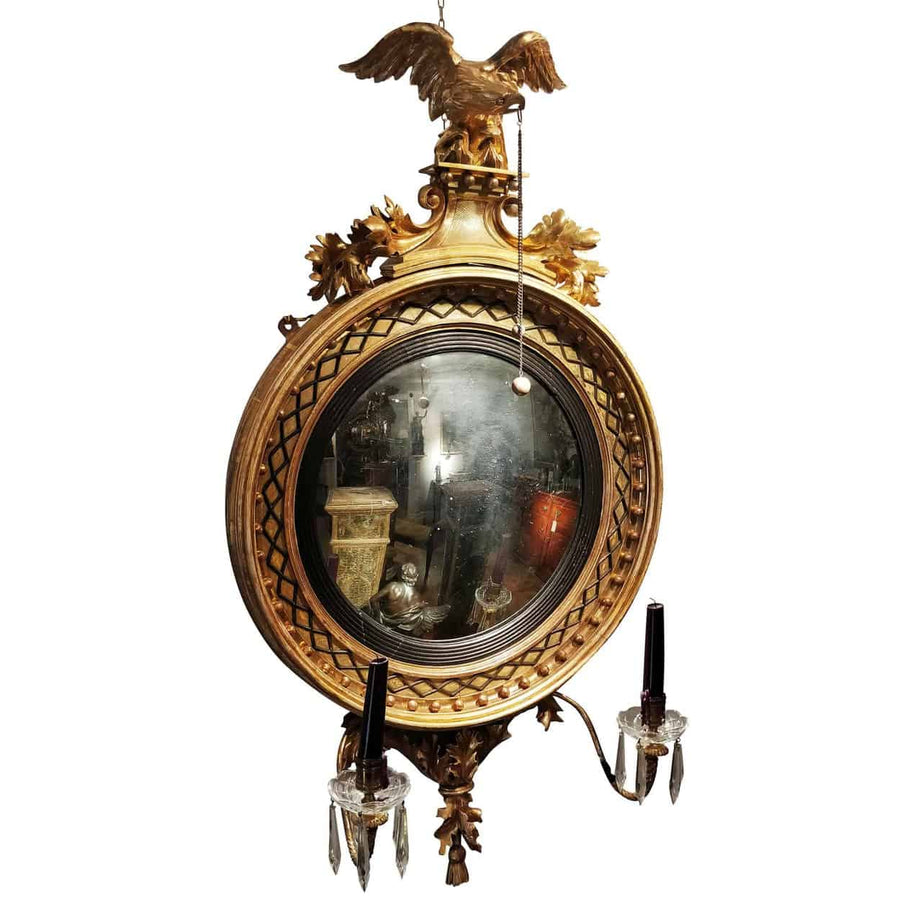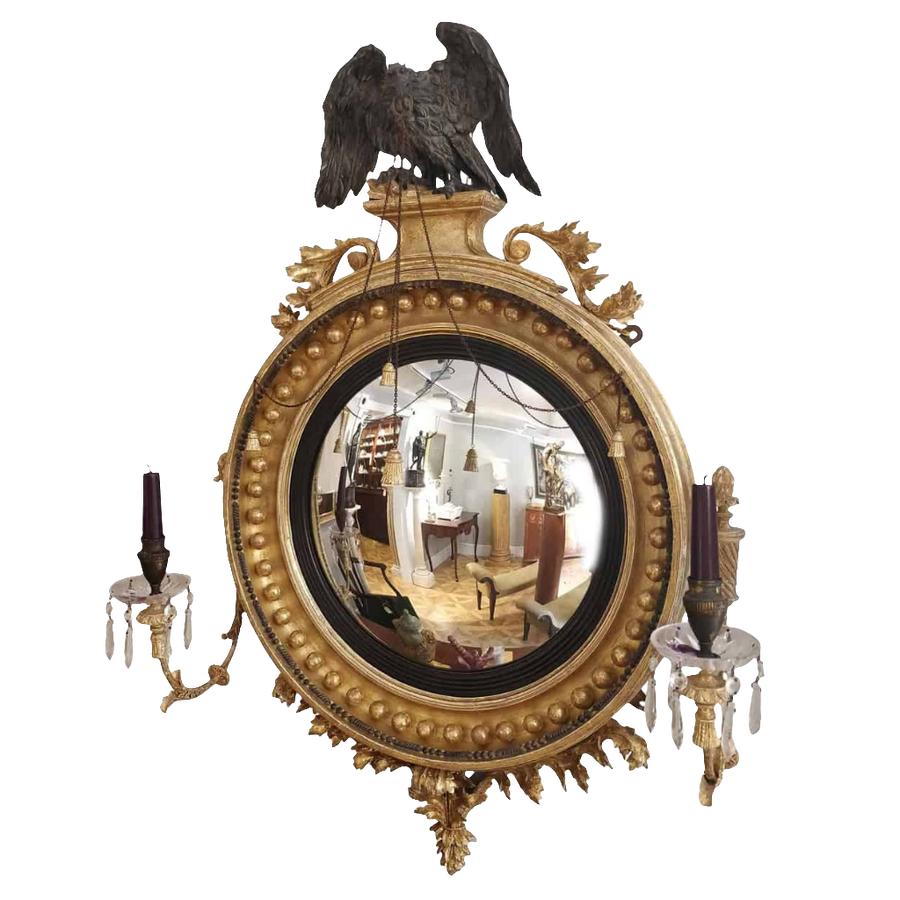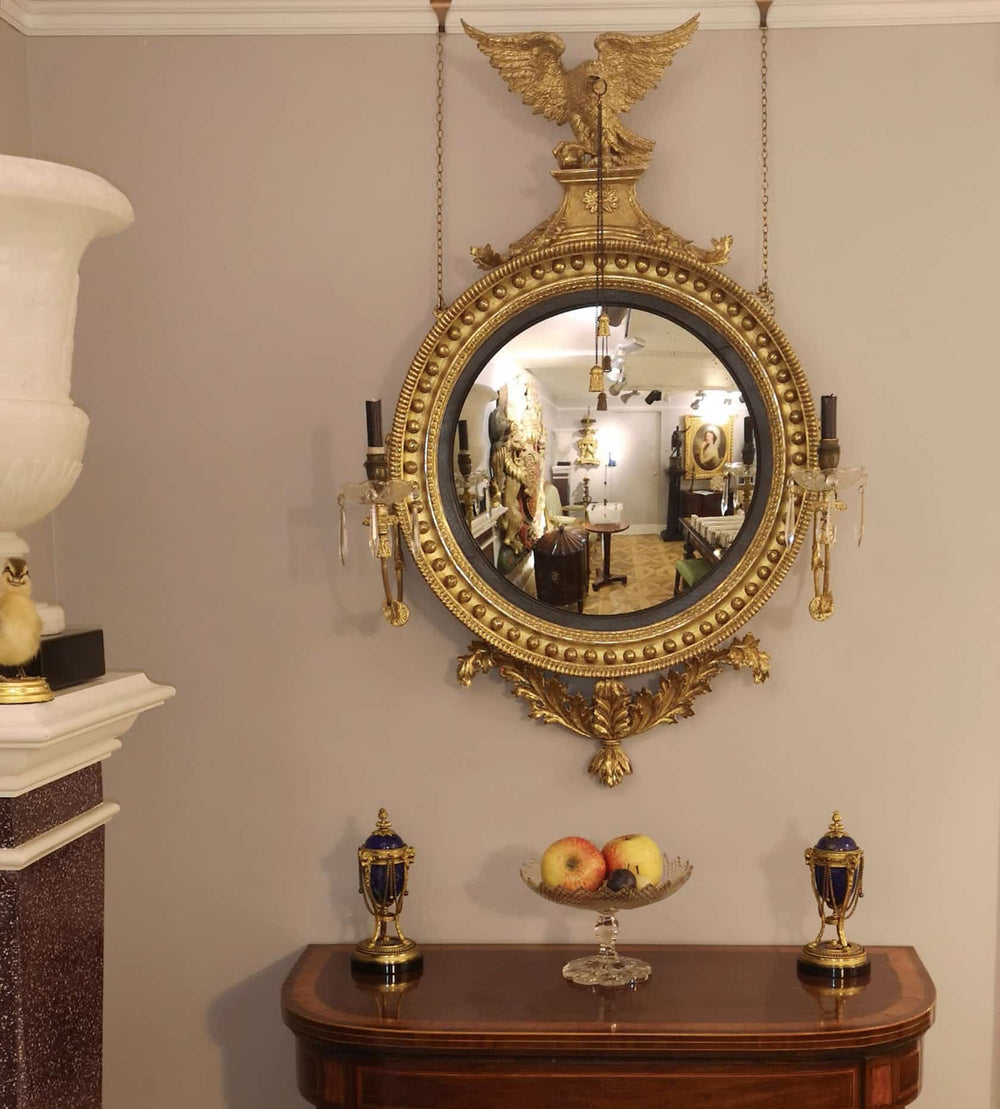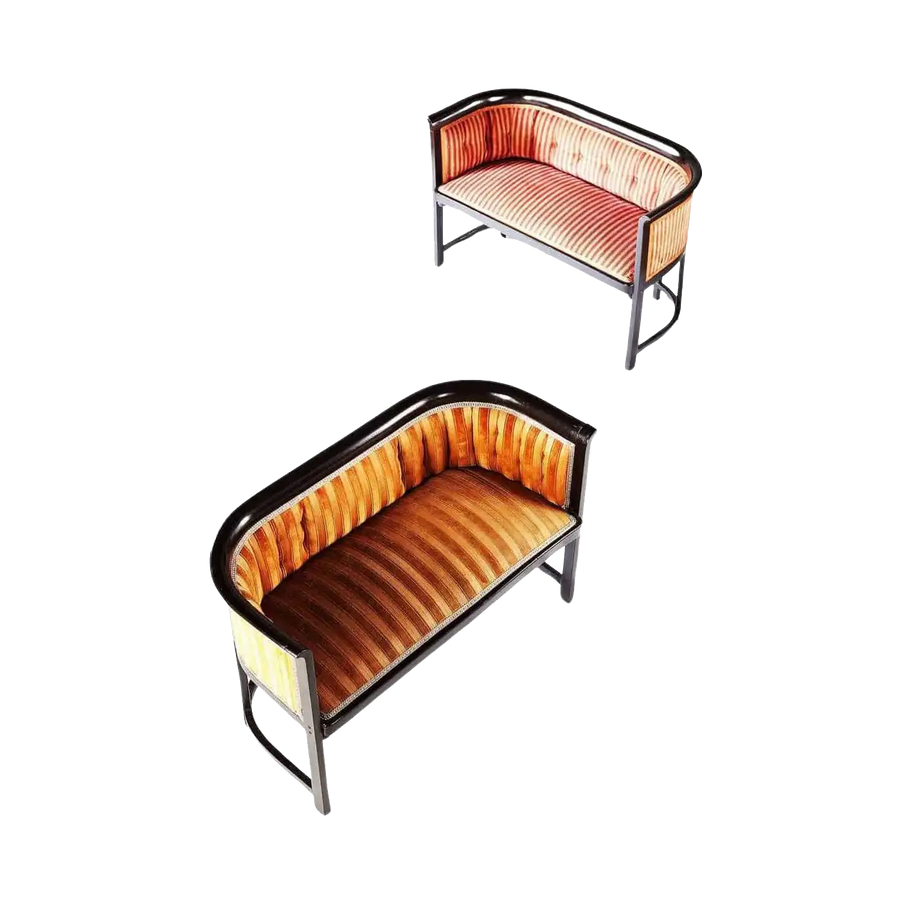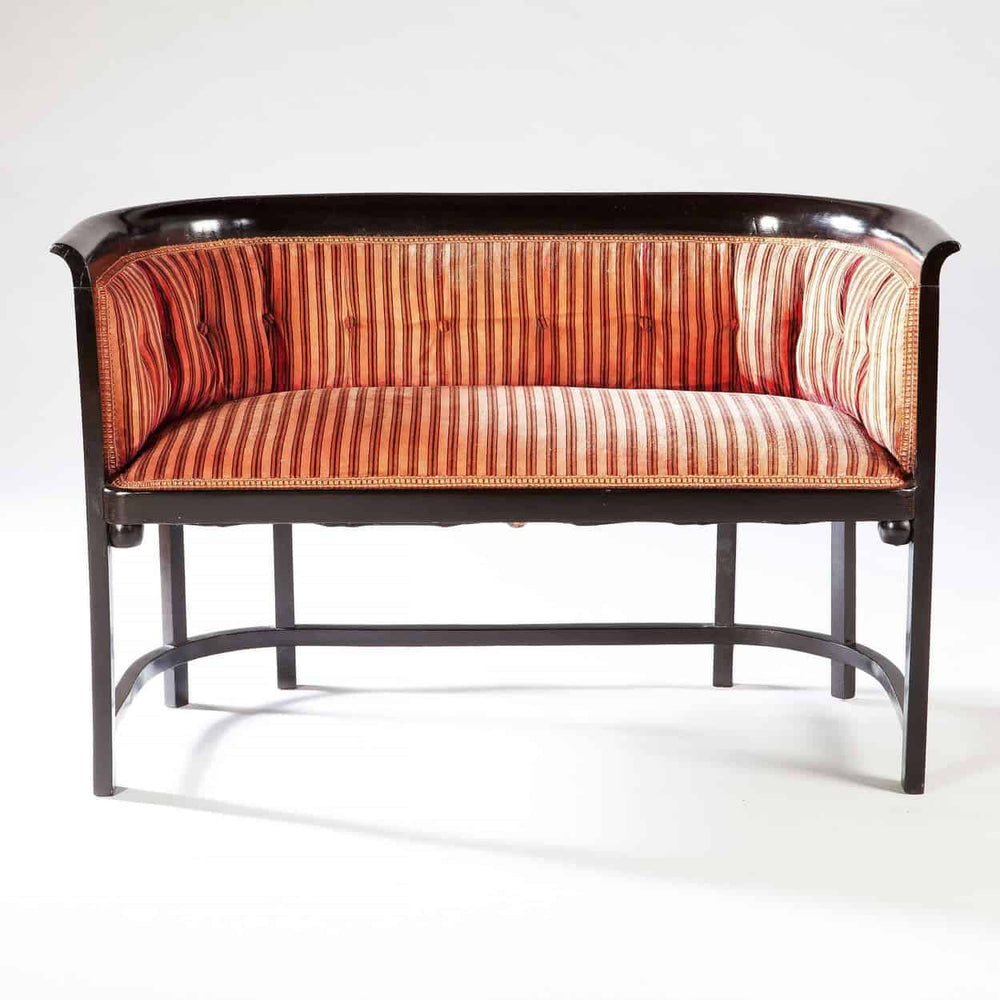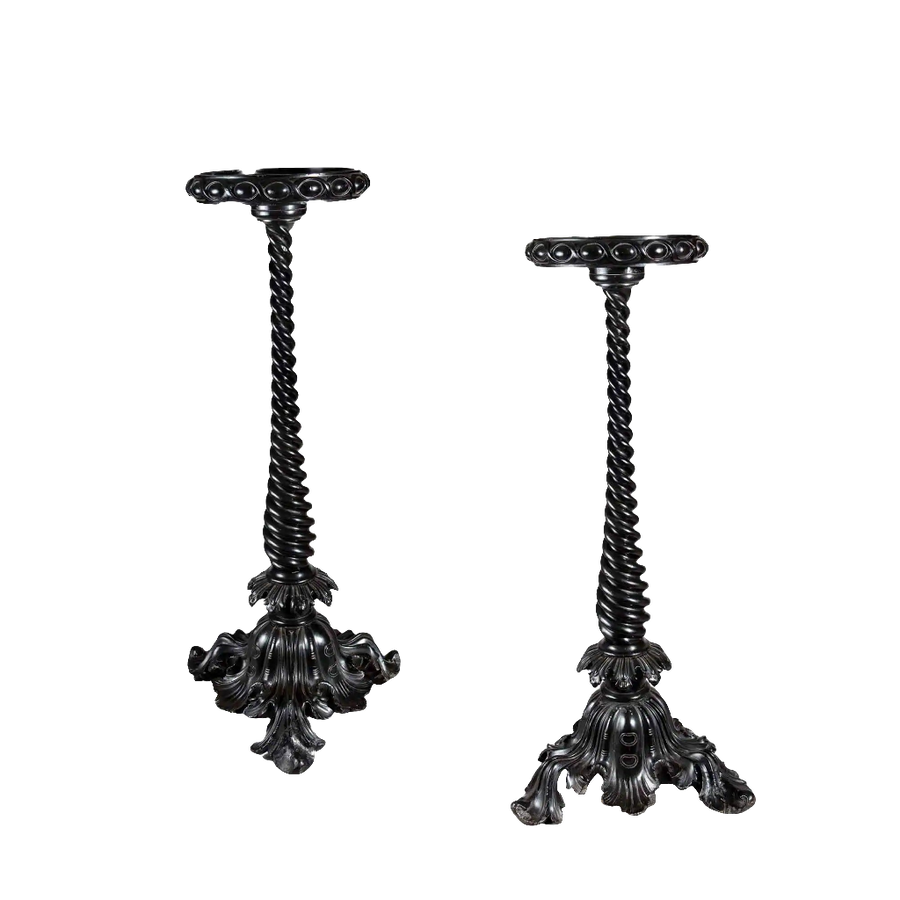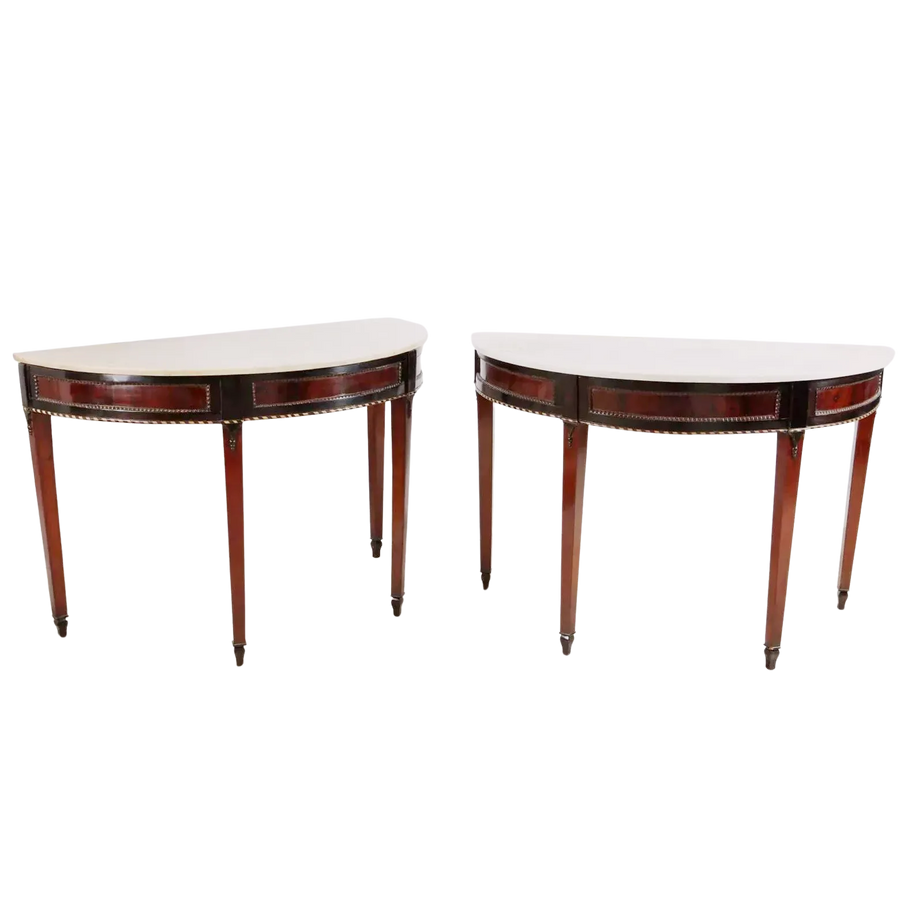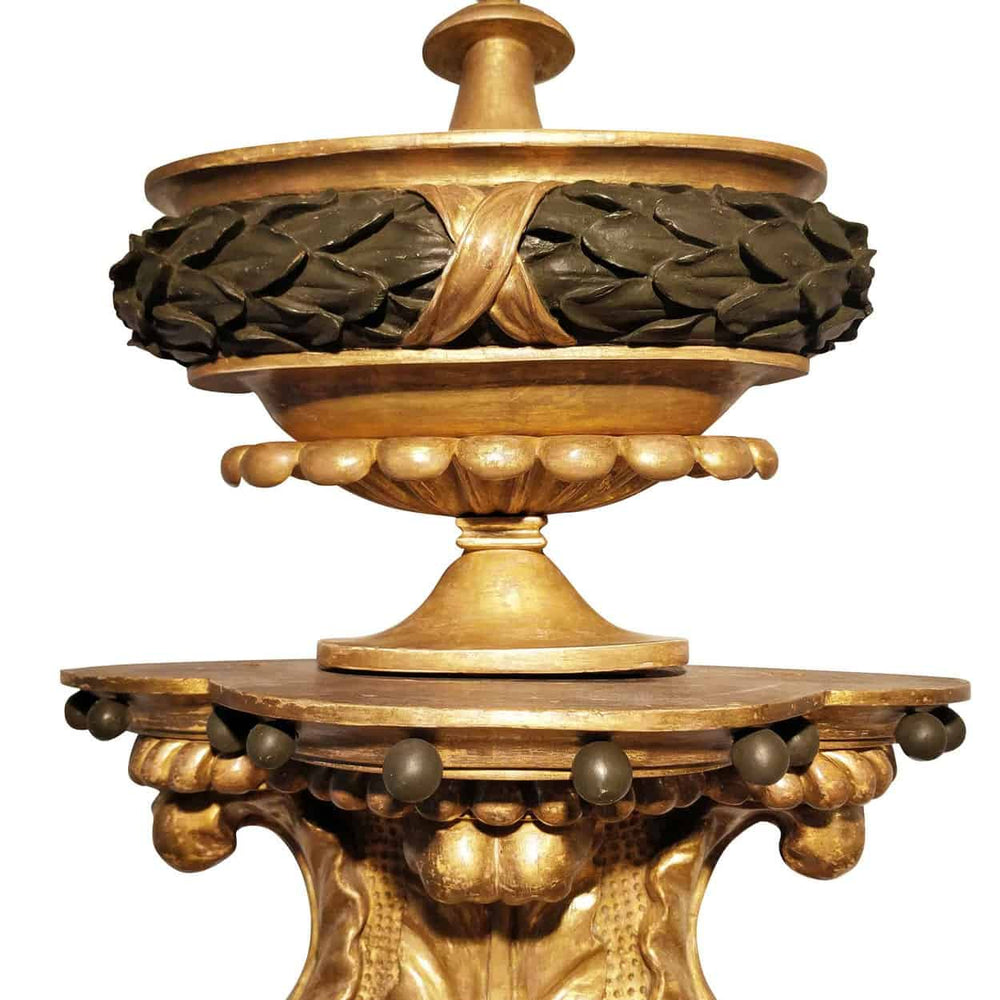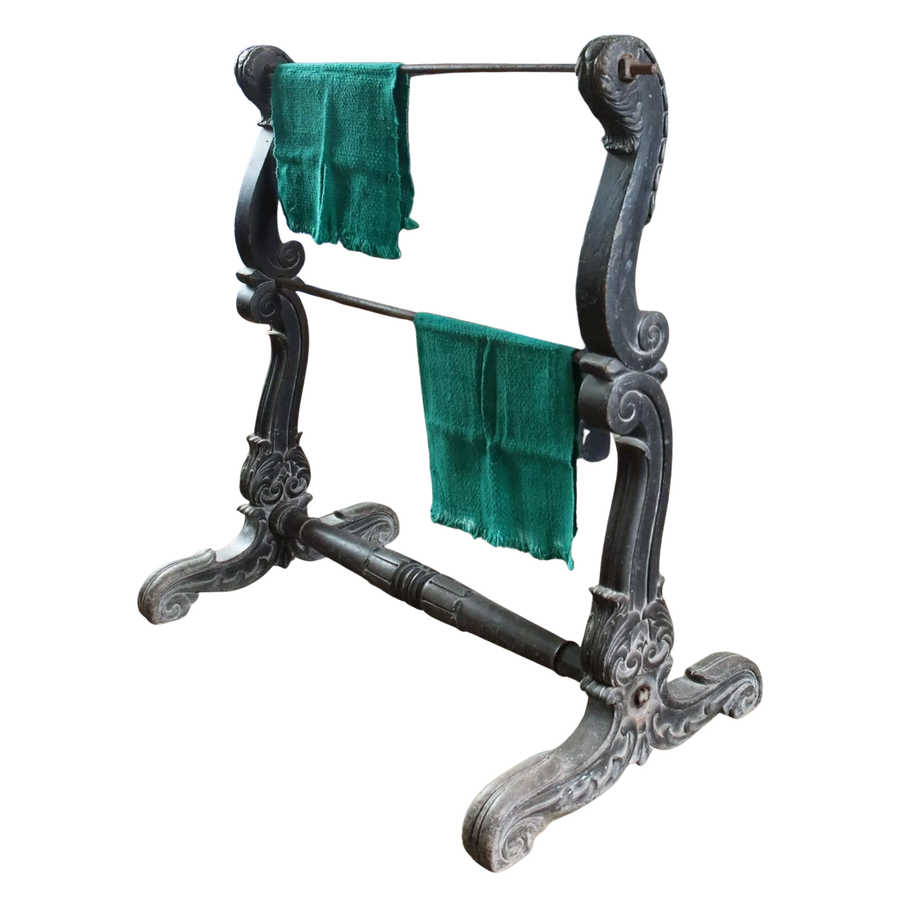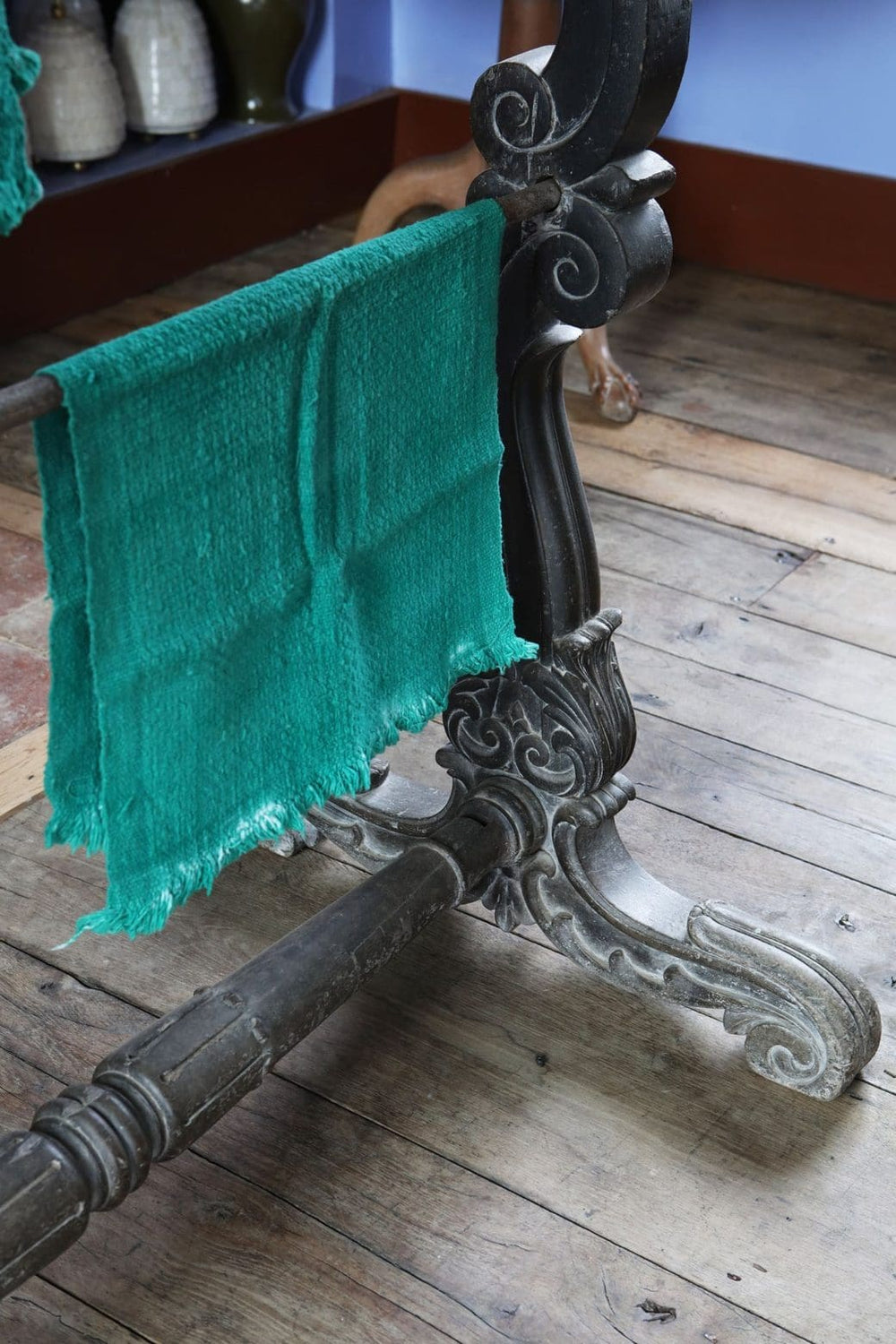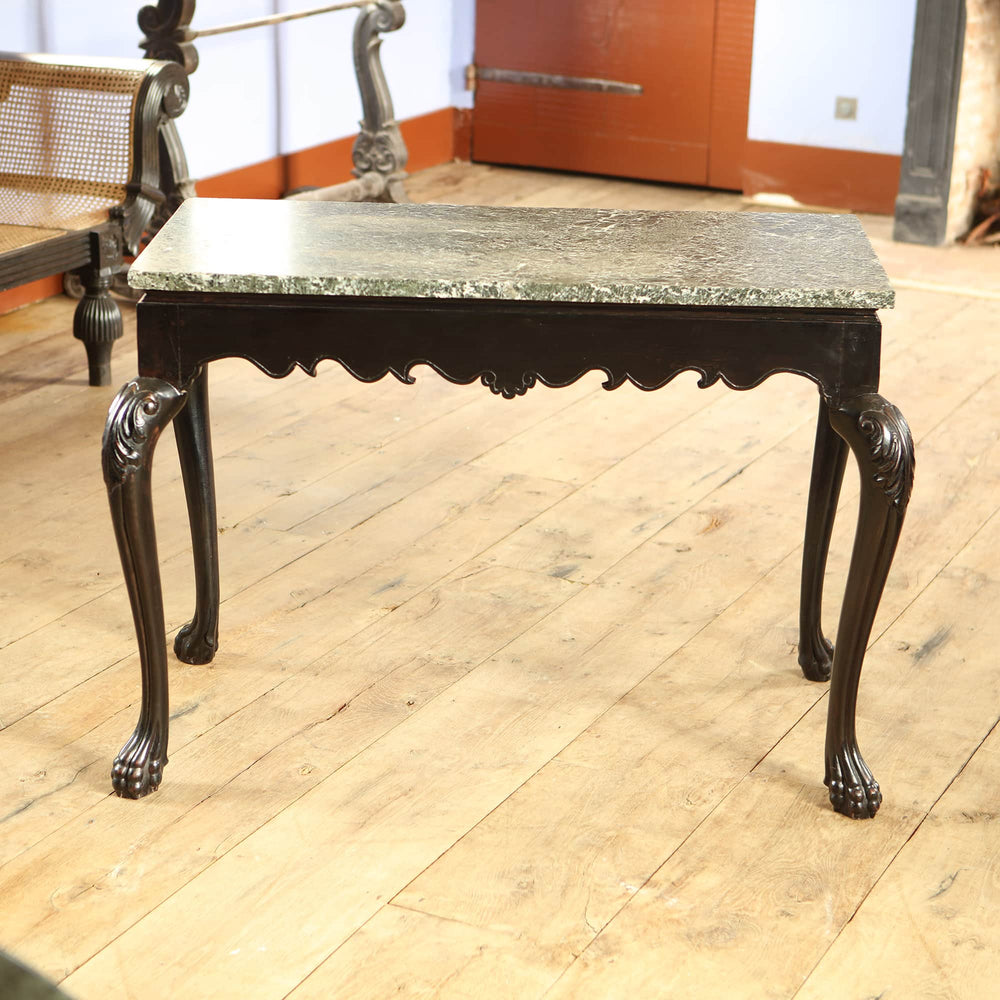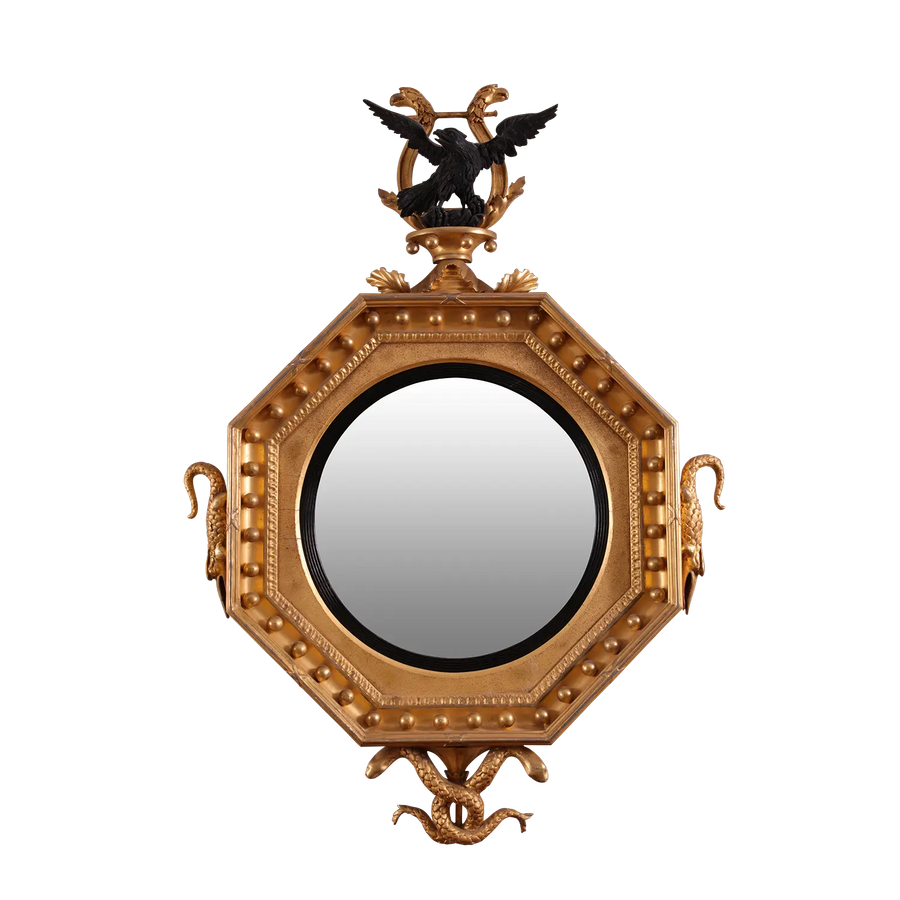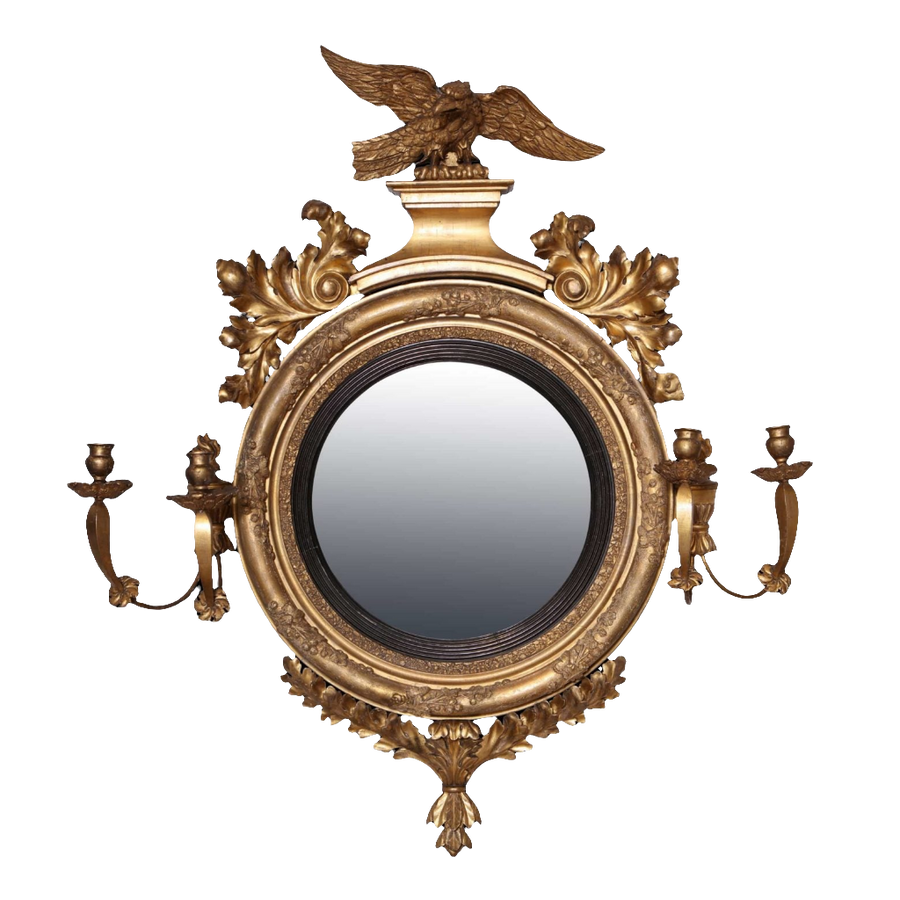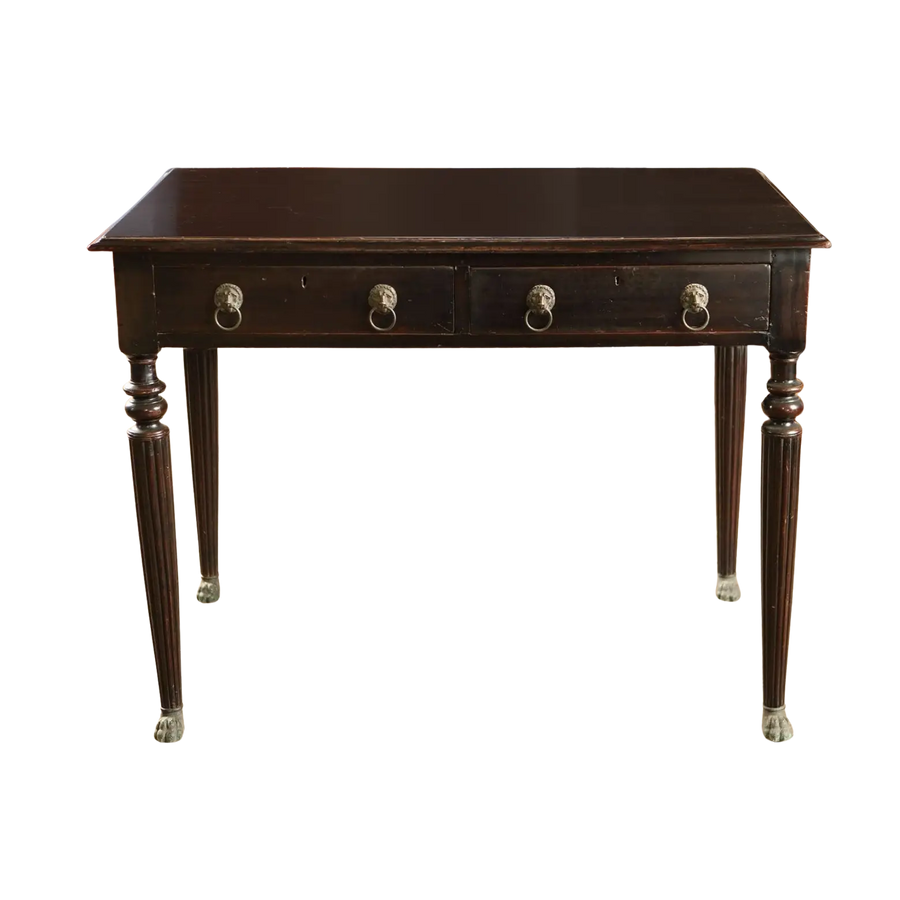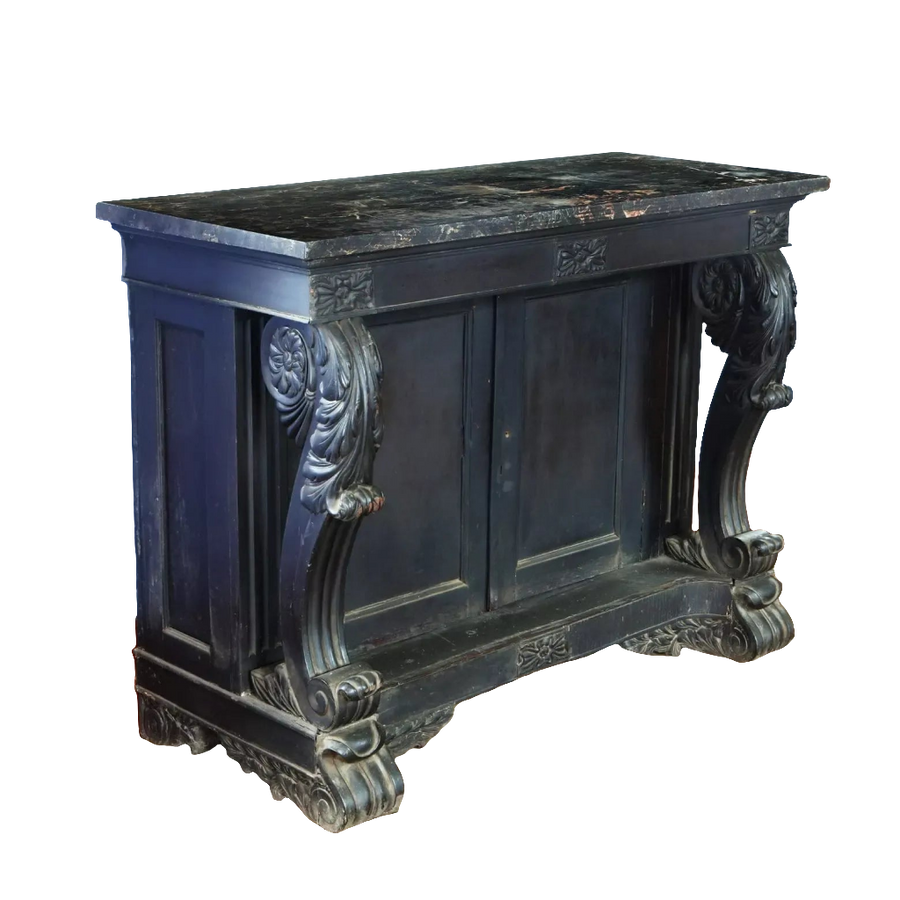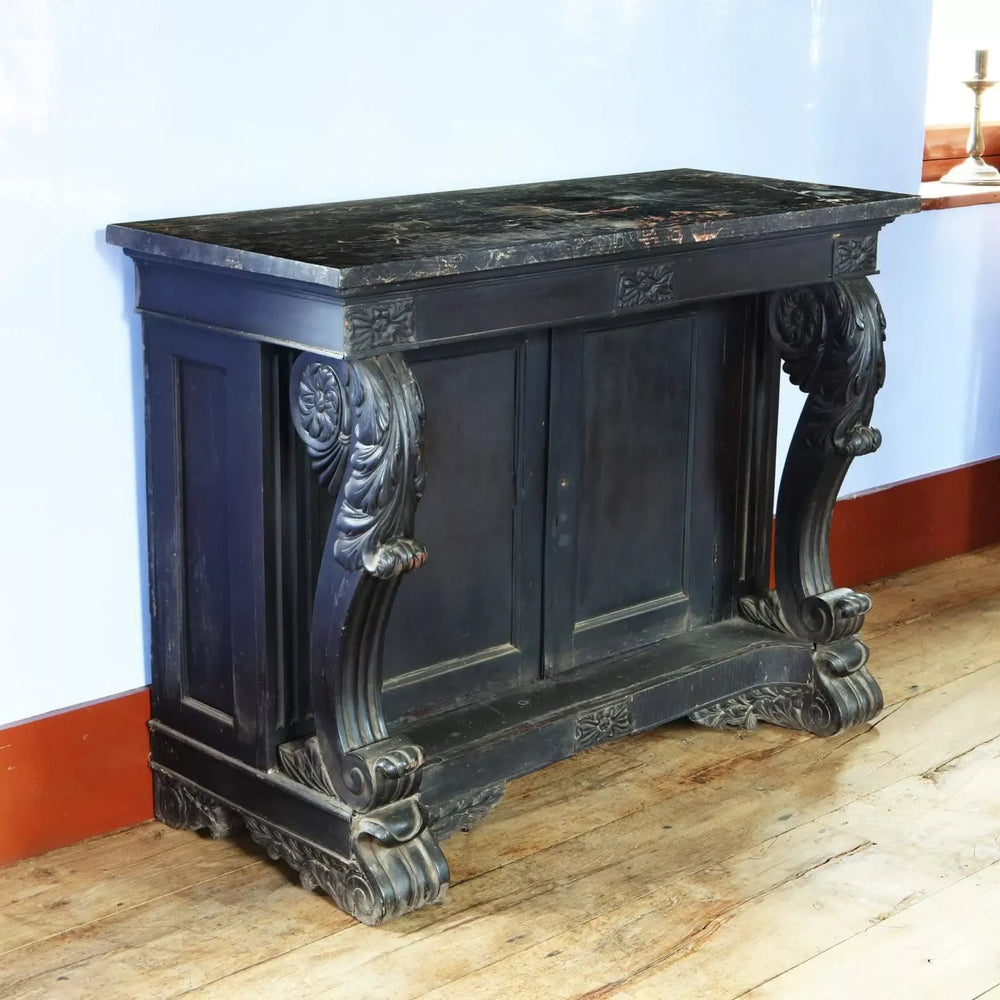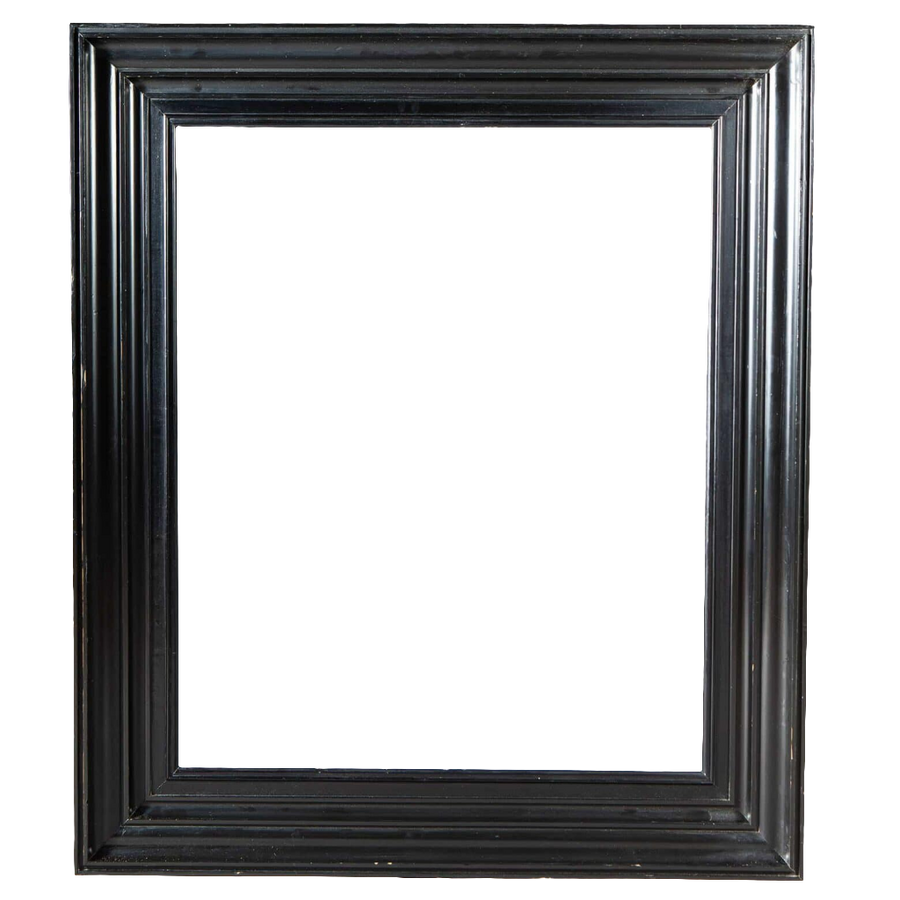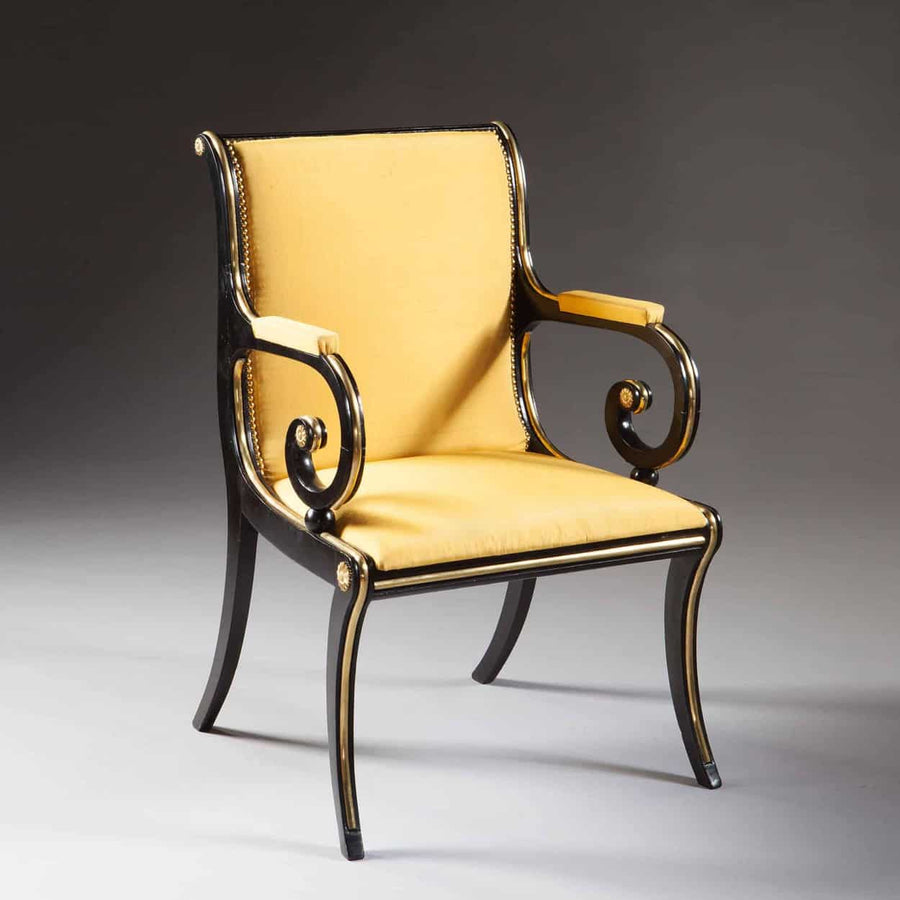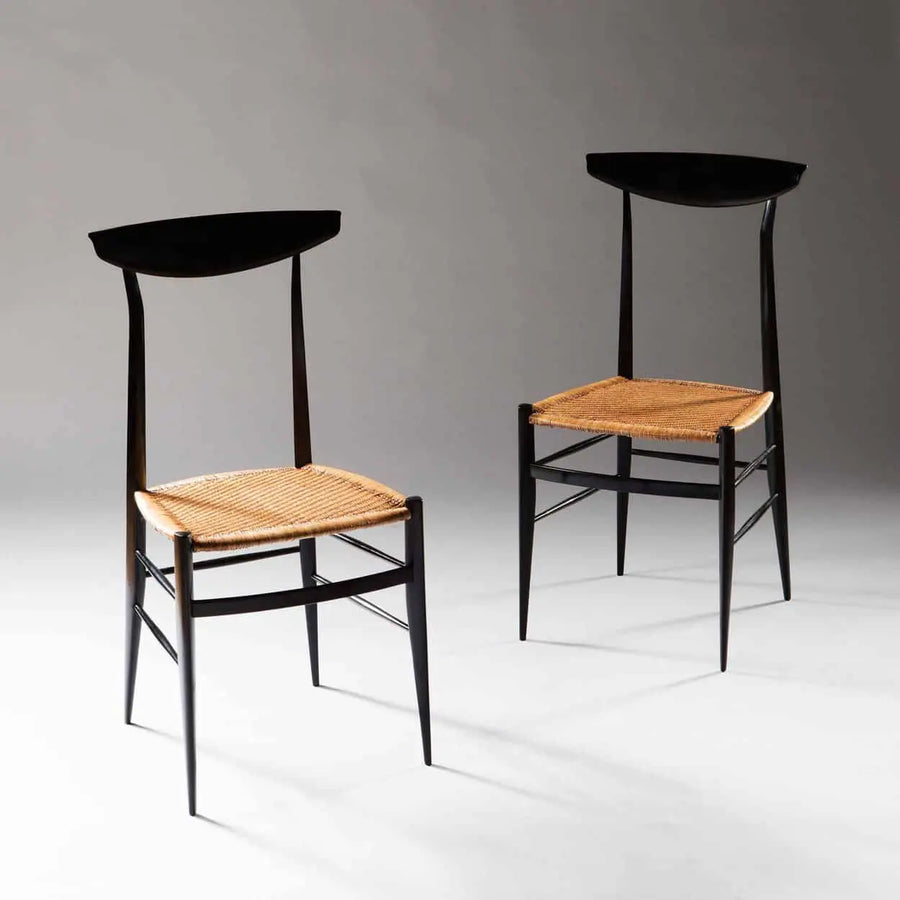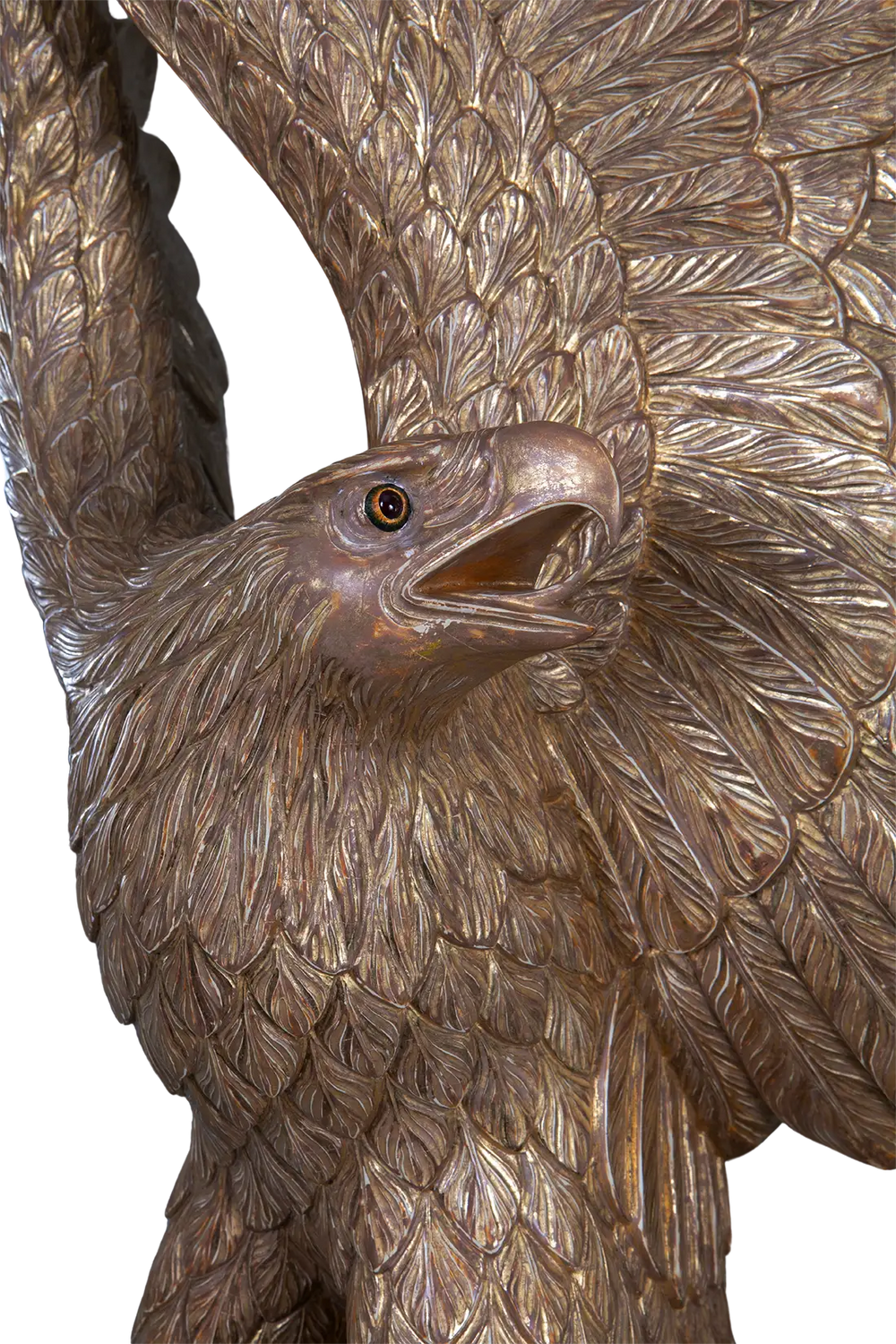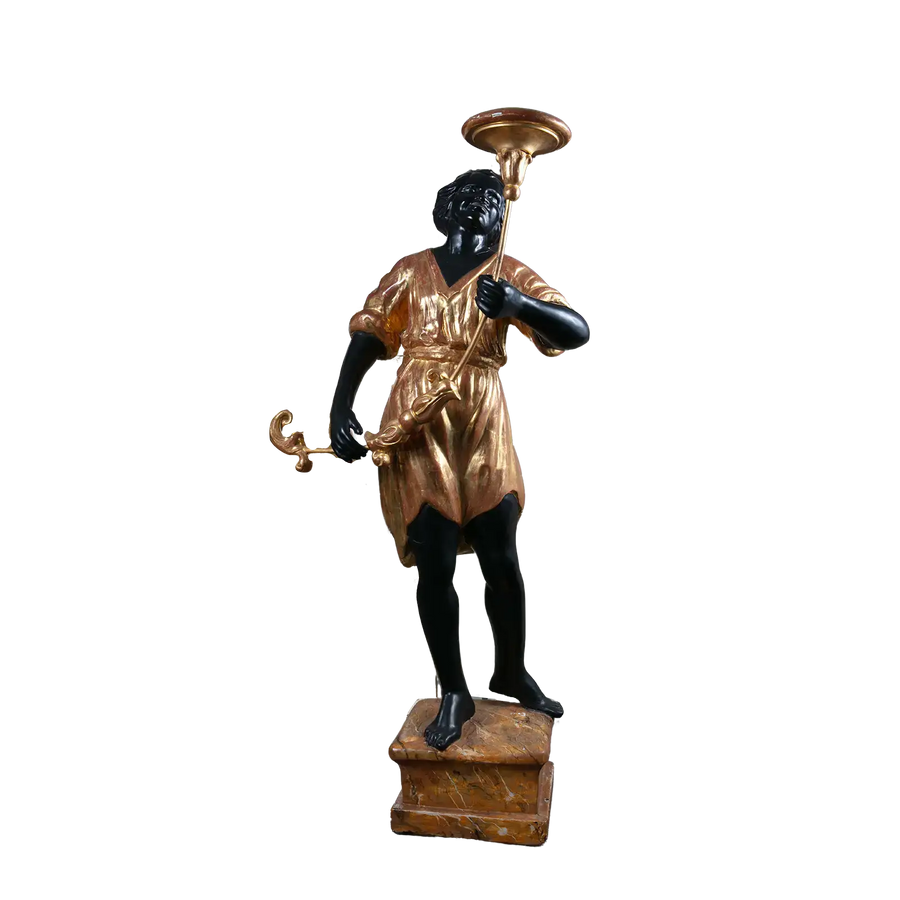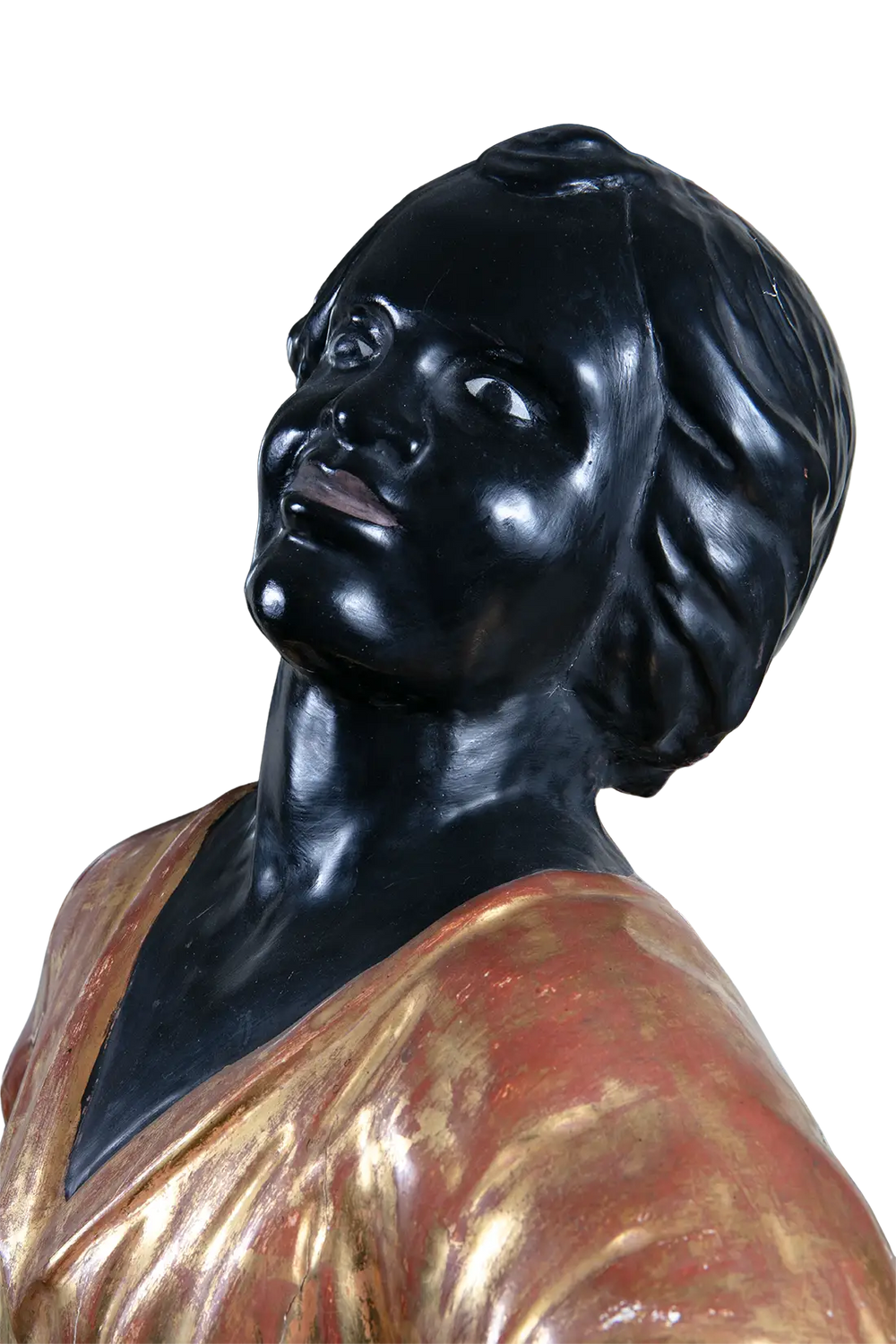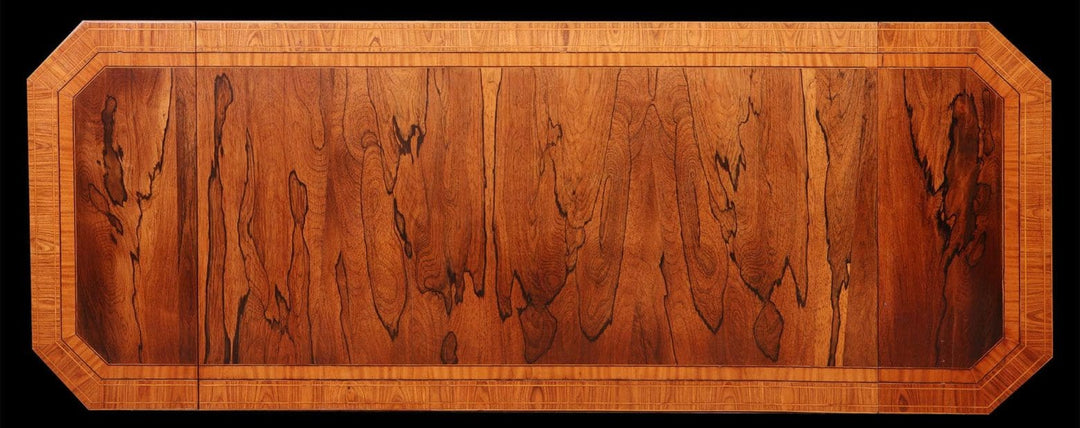
Ebonising is a traditional decorative process that transforms wood into the deep, lustrous black of rare ebony. Since the 17th century, this technique has been admired for its ability to create striking contrasts and dramatic effects in fine furniture and decorative arts.
At Nicholas Wells Antiques, we present a curated collection of ebonised antiques that reflect centuries of craftsmanship and taste. Each piece showcases the elegance of the finish: from refined Regency chairs and Victorian cabinets to Art Deco accessories and striking decorative objects.
Unlike natural ebony, which is rare and costly, ebonising made fine furniture more accessible, while still imbuing interiors with sophistication. Whether paired with gilding, brass inlay, ivory detailing, or left in its pure black richness, ebonised pieces bring timeless refinement to both traditional and modern interiors.
Why Collect Ebonised Antiques?
-
Historical importance – fashionable across Europe from the 17th to the 19th century.
-
Elegant aesthetics – a dramatic, jet-black finish that enhances architectural lines and decorative motifs.
-
Versatility – suits both classic and contemporary interiors.
-
Sustainability – preserves traditional materials while avoiding overharvesting of natural ebony.
Our Collection
Explore our hand-selected range of ebonised antiques, including:
-
Ebonised chairs and seating with gilt or brass accents.
-
Ebonised mirrors that capture light against their dark frames.
-
Ebonised cabinets, tables, and consoles, often with inlaid or carved decoration.
-
Art Deco ebonised accessories, sleek and minimal, perfect for modern interiors.
Each piece has been carefully chosen for its quality, rarity, and craftsmanship.
FAQ: Ebonising & Ebonised Antiques
What is ebonising?
Ebonising is the process of darkening wood to imitate the look of ebony. Craftsmen achieved this by applying dark stains, black dyes, or chemical treatments that penetrate the grain.
Which woods were typically ebonised?
Furniture makers often ebonised close-grained hardwoods such as beech, maple, or oak, which absorbed the stain well and produced a smooth, lustrous surface.
Why was ebonising so popular?
Ebony was highly prized but extremely expensive and limited in supply. Ebonising allowed cabinetmakers to achieve the same luxurious appearance at a fraction of the cost.
How can you tell if a piece is truly ebonised or solid ebony?
Solid ebony is very heavy, fine-grained, and rare, often reserved for small items or details. Ebonised wood tends to show its natural grain beneath the dark finish and is lighter in weight.
Are ebonised antiques durable?
Yes. When well-made and cared for, ebonised antiques are remarkably long-lasting. Over time, the black surface may soften to reveal hints of the underlying grain, adding depth and character.
Do ebonised antiques work in modern interiors?
Absolutely. The strong, monochrome aesthetic of ebonised furniture pairs effortlessly with minimalist, contemporary, or eclectic design schemes.
Collecting with Nicholas Wells Antiques
Our passion for historic craftsmanship ensures that every ebonised piece we source is authentic, beautifully preserved, and of the highest quality. These antiques represent not just furniture, but cultural history and timeless design.
Explore Ebonised Antiques →





